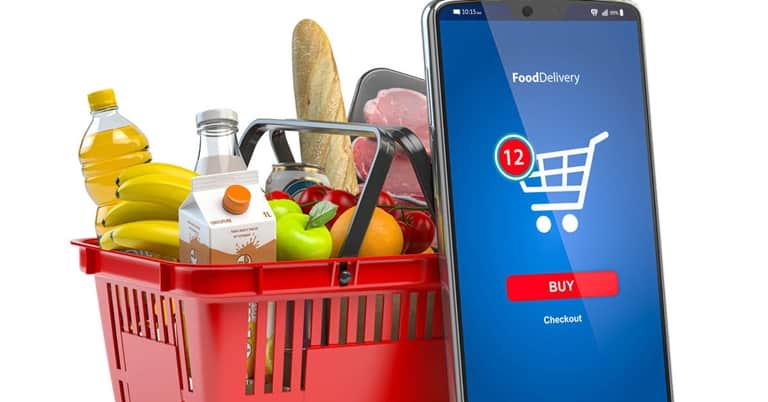This article originally featured in ET Retail on the 05/06/2021.
E-GROCERY NEEDS TO BREAK FREE FROM THE LEGACY BRICK AND MORTAR FORMAT
When do we go grocery shopping? Once a month, once a fortnight, once a week, or perhaps when we are throwing a party? We shop as per our convenience. Convenience is the key word. Online grocery stores are continuously trying to make shopping more efficient and hassle-free. However, as long as grocers are trying to replicate the physical store layout online, the experience will be sub-par as scrolling through the large product catalogue to find the items one needs is time-consuming and dull.
Categorization is essential in the store. Hypermarkets and supermarkets have several aisles (fresh produce, fish and meat, dairy, spices, cereals and so on), where shoppers cart around from entry to exit.
Online grocery shopping has gone a couple of steps ahead of stores with sub-categorization. Within dairy one can navigate to milk, yoghurt, cheese etc. and pick their favorites. However, a closer look at a typical grocery shopping event shows that this journey is less than ideal. Why? Because it fails to recognize that a customer or a household buys the same products over and over, month after month. Sure, there is exploration with new brands and different flavors, but unlike say, fashion shopping, where a shirt bought in the past is almost never bought again, re-buy is a key requirement in grocery.
The power of personalized grocery e-store
So how should the online grocery store be organized? The advantage of eCommerce is that algorithms can create a personalized layout for each customer, which is not possible in a brick and mortar store. An online customer can have his or her own aisle – imagine an aisle ‘For Jonathan’ or ‘For Martha’, where he or she has a pre-curated set of products for their household needs.
Personalization in grocery means dynamically creating these custom baskets, so the shopper does not have to go back and forth between different categories to add the one product to their cart. These pre-loaded baskets not only make the chore more efficient, but also ensure that customers do not forget any essentials they need. With the cart already in place, all a customer has to do is add any additional products (from a set of personalized recommendations or from category pages), and remove products they don’t need at the moment.
Research shows that in the grocery vertical, time spent online in finding products and building the cart is inversely proportional to loyalty. Given this, this ‘personalized aisle’ is key to customer lifetime value.
Surge in online grocery and intense competition
Grocery shopping anytime and from anywhere has been growing in the past decade, but saw enormous acceleration during the pandemic. A survey by Clinch in the US found that 75.4% of consumers purchase groceries online, with 80% of those consumers citing that they shop for groceries online more than ever before, since the pandemic. This trend will continue, as 75.8% of consumers plan to continue to shop online for groceries post the pandemic.
With such phenomenal growth across the globe, the pie has expanded. At the same time, competition is heating up and supermarket margins are wafer thin. Marketers spend a lot of effort in getting the customer back to the eCommerce site. Once the visit is secured, personalization should be used as a strategic lever to create a frictionless shopping experience, lock-in conversions and grow share of wallet.
Modelling the online grocery stores on brick and mortar stores, therefore, is a big compromise and is demanding a fresh perspective.
 in Sweden from 7 - 8 October 2025. Pre-book a meeting to connect with our
product experts.
in Sweden from 7 - 8 October 2025. Pre-book a meeting to connect with our
product experts.










